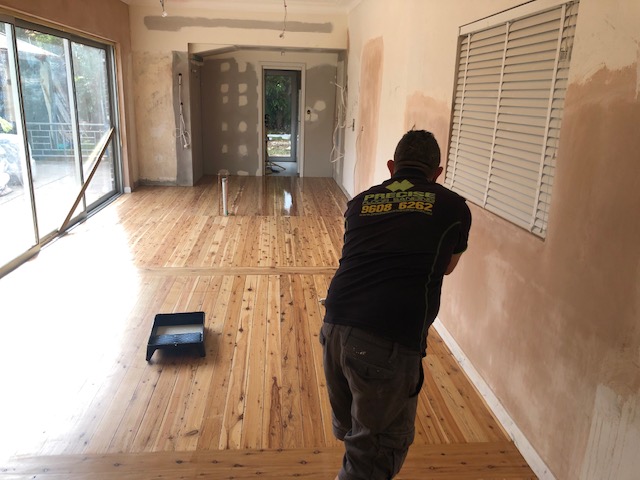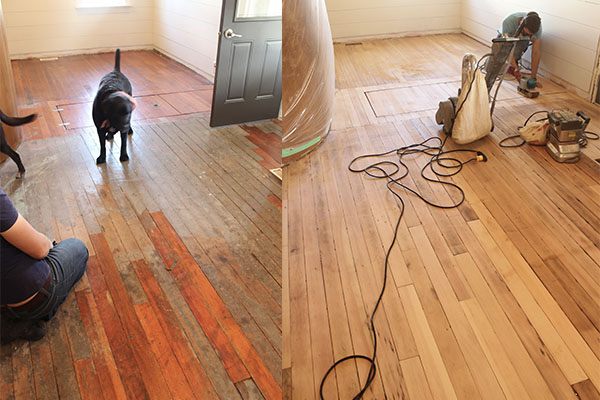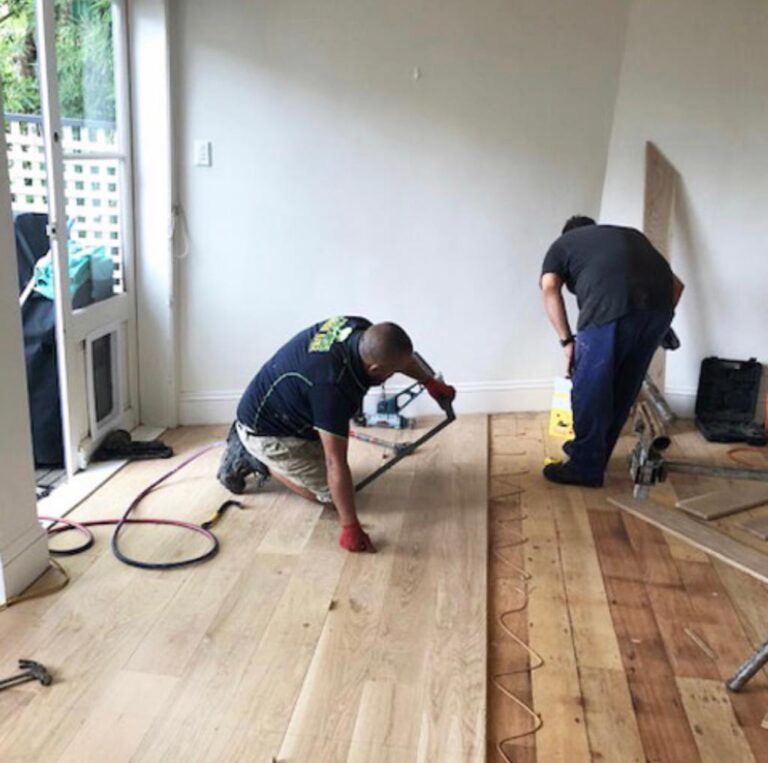Introduction to timber floor sanding
Timber floor sanding is a vital process in maintaining and rejuvenating the beauty of wooden floors. Over time, wooden floors can become dull, scratched, and worn due to daily wear and tear. Timber floor sanding helps restore the original lustre and smoothness of the wood, transforming the appearance of the entire space.
The process involves carefully sanding the wooden surface to remove imperfections, such as scratches, stains, and dents, and preparing it for refinishing. Whether you have hardwood, engineered, or parquet floors, timber floor sanding can breathe new life into your flooring, making it look fresh, elegant, and inviting.
By removing the worn-out top layer of the wood, timber floor sanding reveals the natural beauty of the timber, enhancing the aesthetics of any room. It also creates a clean and smooth surface that acts as a blank canvas for applying finishes and stains to achieve the desired colour and style.
Timber floor sanding is a skilled job that requires expertise, precision, and the right equipment. Hiring professional timber floor sanding services ensures that the process is carried out efficiently and effectively, delivering outstanding results. Whether you are renovating your home, preparing a property for sale, or simply looking to refresh your living space, timber floor sanding can make a significant difference.
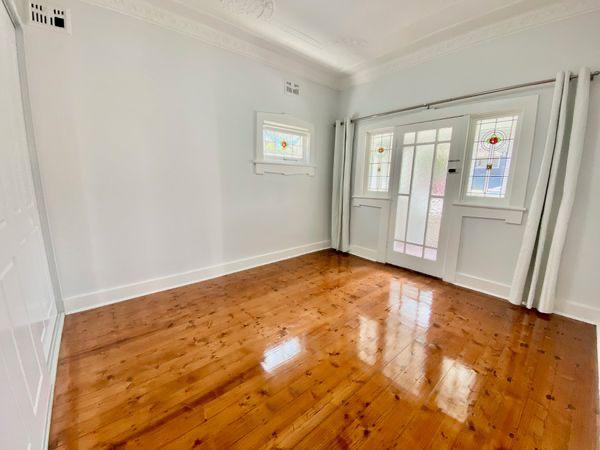
Importance of maintaining and rejuvenating wooden floors
Preserving the Beauty: Wooden floors add warmth, character, and elegance to any room. However, over time, they can suffer from scratches, stains, and wear, which can diminish their appearance. Regular maintenance and rejuvenation help to restore their original beauty, bringing back the lustre and natural appeal of the wood.
Enhancing the Value of the Property: Well-maintained and rejuvenated wooden floors are highly desirable and can significantly increase the value of your property. Whether you plan to sell your home or simply want to create a welcoming environment, investing in the maintenance of wooden floors is a wise decision.
Extending the Lifespan: Wooden floors are an investment that can last for generations with proper care. Regular maintenance and rejuvenation help to remove dirt, grime, and scratches that can deteriorate the wood’s surface over time. By addressing these issues promptly, you can extend the lifespan of your floors and enjoy their beauty for many years to come.
Improving Indoor Air Quality: Wooden floors are hypoallergenic compared to carpets, as they do not trap dust, allergens, or pet dander. However, if the floors are not properly maintained, dust and debris can accumulate in the crevices, affecting indoor air quality. Regular cleaning and rejuvenation help to keep the floors clean and minimize the presence of allergens in your home.
Preventing Further Damage: Neglected wooden floors can develop more severe issues over time, such as warping, rot, or deep scratches. By proactively maintaining and rejuvenating your floors, you can address minor damages before they escalate, saving you from costly repairs or even the need for floor replacement.
Sustainability and Eco-friendliness: By maintaining and rejuvenating your wooden floors, you contribute to sustainable practices. Rather than replacing the entire floor, which requires new resources, sanding and refinishing allow you to reuse the existing wood, reducing waste and promoting environmental consciousness.
Creating a Fresh and Inviting Space: There’s something special about walking on beautifully maintained wooden floors. They create a sense of warmth, comfort, and sophistication, elevating the overall ambience of your space. By keeping your wooden floors in top condition, you create a welcoming environment that you and your guests can enjoy.
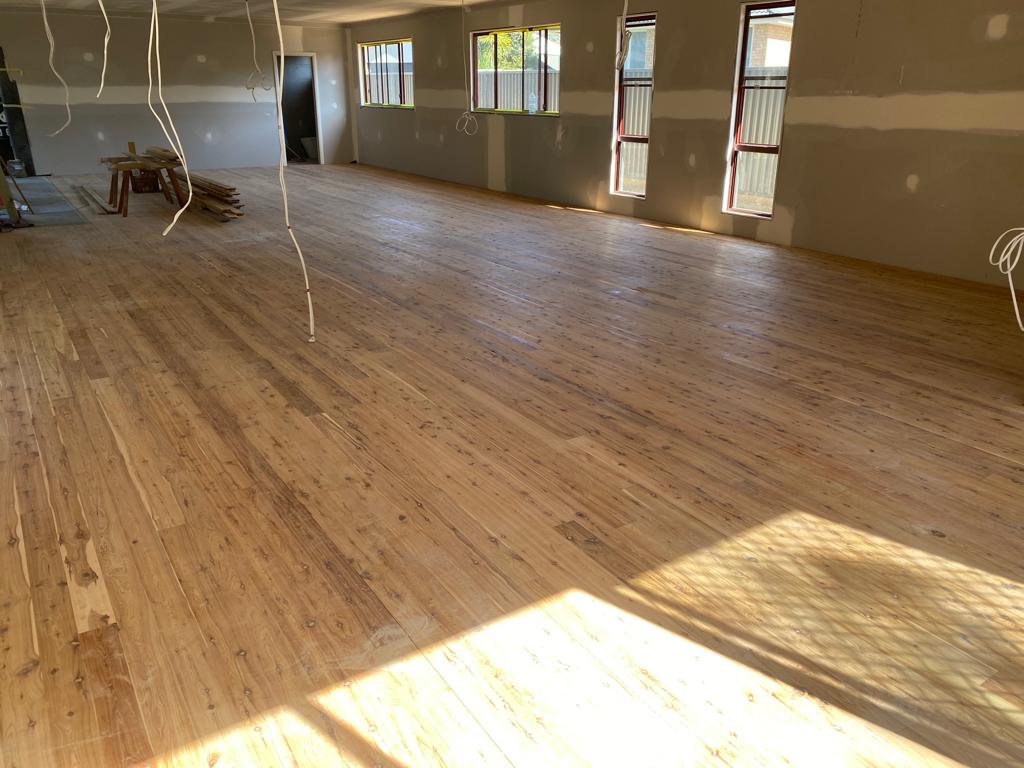
Overview of the timber floor sanding process
Timber floor sanding is a meticulous and transformative process that aims to restore the beauty and durability of wooden floors. Whether you have hardwood, engineered, or parquet floors, sanding is an essential step in maintaining and rejuvenating them.
Here’s an overview of the timber floor sanding process:
Inspection and Preparation: The process begins with a thorough inspection of the floors. Professional sanding companies, like ours, assess the condition of the wood, identify any damages, stains, or imperfections, and determine the appropriate sanding approach. We also inspect the type of wood, its age, and any previous finishes to tailor the process to your floor’s specific needs.
Clearing the Area: Before commencing the sanding process, the room needs to be prepared. Furniture, rugs, and any objects on the floor are carefully removed to create an unobstructed work area.
Coarse Sanding (Stripping): The first sanding phase involves using coarse-grit sandpaper or a sanding machine to strip away the existing finish, stains, and surface imperfections. This level of sanding is essential for removing deep scratches, uneven surfaces, or any previous coatings that have worn down over time.
Medium Sanding: After the coarse sanding, medium-grit sandpaper is used to create a smoother surface and further eliminate any remaining scratches and imperfections left from the coarse sanding phase. This step prepares the wood for the final sanding.
Fine Sanding: During the fine sanding stage, fine-grit sandpaper is applied to achieve a polished and flawless surface. This step ensures the removal of any minor blemishes and provides a uniform finish across the entire floor.
Edge Sanding: To access areas that the larger sanding machine cannot reach, such as corners and edges, a specialized edge sander is employed. This ensures consistent sanding throughout the entire floor, leaving no untreated areas.
Buffing: After the main sanding process, buffing is performed to refine the surface further and create a smooth and even texture. Buffing also helps to prepare the floor for the next crucial steps of staining and finishing.
Staining (Optional): If desired, a stain or tint can be applied to the sanded floor to alter its colour or enhance the natural wood grain. Staining allows for personalization and can complement your interior design style.
Finishing: The final step involves applying a protective finish, such as varnish, polyurethane, or oil, to seal the wood and safeguard it from future wear and tear. The finish also enhances the wood’s natural beauty and provides a stunning sheen.
Cleanup: Once the sanding, staining, and finishing are complete, the area is thoroughly cleaned to remove any residual dust and debris, leaving behind a clean and revitalized floor.

Assessment and preparation stage
Here's an overview of the assessment and preparation stage
Floor Inspection: Our experienced professionals will thoroughly inspect your floors to assess their condition. We look for signs of wear and tear, scratches, stains, uneven surfaces, and any other imperfections that may require attention during the sanding process. This inspection helps us understand the unique needs of your floors and determine the most suitable sanding approach.
Type of Wood and Finish: We identify the type of wood you have, such as hardwood, engineered, or parquet, as different woods require different sanding techniques. We also take note of the current finish on your floors, whether it’s varnish, polyurethane, or oil-based. Understanding the type of wood and finish enables us to select the appropriate sanding tools and products.
Furniture Removal: To ensure unobstructed access to the entire floor area, we carefully remove any furniture or objects from the room. This step protects your belongings and allows us to work efficiently and thoroughly.
Floor Repairs: During the assessment, we identify any areas of the floor that require repairs. This may include filling in gaps, replacing damaged boards, or addressing any structural issues. By addressing these repairs before sanding, we can restore the integrity and stability of your floors.
Surface Cleaning: Before sanding, it’s important to have a clean surface free from dust, debris, and loose particles. Our team will thoroughly clean the floors, removing any dirt, grime, or residue that may affect the sanding process or the final result.
Floor Protection: We take steps to protect areas adjacent to the floor, such as walls, baseboards, and fixtures, to prevent any accidental damage during the sanding process. This includes applying protective coverings or masking tape to ensure a clean and precise sanding job.
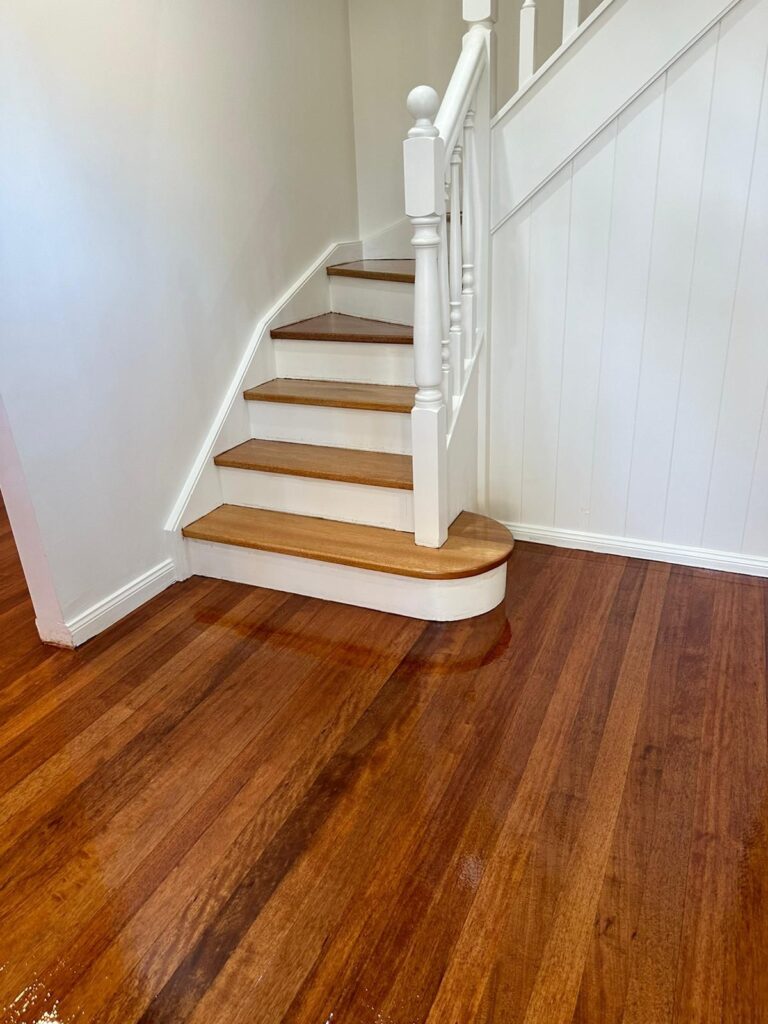
Sanding techniques and equipment used
Here are some of the sanding techniques and equipment we use
Coarse Sanding: To remove the existing finish, deep scratches, and imperfections, we start with coarse sandpaper. This initial sanding stage helps to level the floor surface and prepares it for finer sanding.
Fine Sanding: After the coarse sanding, we progress to finer sandpaper grits, gradually achieving a smoother and more refined finish. Fine sanding helps to eliminate any remaining scratches or unevenness, leaving the floor surface ready for the next steps.
Edging: Using specialized edging sanders, we meticulously sand the perimeter of the room and hard-to-reach areas such as corners and edges. This ensures a consistent and seamless sanding result throughout the entire floor.
Buffer Sanding: A buffer sander equipped with a fine-grit sanding pad is employed to further refine the floor surface and eliminate any visible marks left by the previous sanding stages. This step helps to achieve a smooth and uniform appearance.
Dust Containment Systems: To minimize dust and airborne particles during the sanding process, we utilize modern dust containment systems. These systems efficiently capture and contain dust, ensuring a cleaner and healthier environment for both our team and the property.
Vacuuming and Cleaning: Throughout the sanding process, our team regularly vacuums and cleans the floor surface to remove any dust or debris. This ensures that the subsequent stages, such as staining or finishing, can be applied smoothly and evenly.
Dust containment during the sanding process
Dust containment during the sanding process
Advanced Dust Containment Systems: We employ modern dust containment systems that are specifically designed to capture and contain the dust generated during the sanding process. These systems consist of powerful vacuum units connected to the sanding equipment, effectively capturing the dust particles at the source.
High-Efficiency Dust Collection: Our dust containment systems are equipped with high-efficiency filters that effectively trap even the finest dust particles. This ensures that the majority of the dust is collected and contained, preventing it from spreading throughout the property.
Sealing Off Adjacent Areas: Before starting the sanding process, we take precautions to seal off adjacent areas to minimize the spread of dust. This may involve using plastic sheets or temporary barriers to isolate the working area, preventing dust from travelling to other parts of the property.
Regular Cleaning and Vacuuming: Throughout the sanding process, our team conducts regular cleaning and vacuuming to remove any dust or debris that may have escaped the containment system. This helps maintain a clean and dust-free working environment, ensuring a more efficient and effective sanding process.
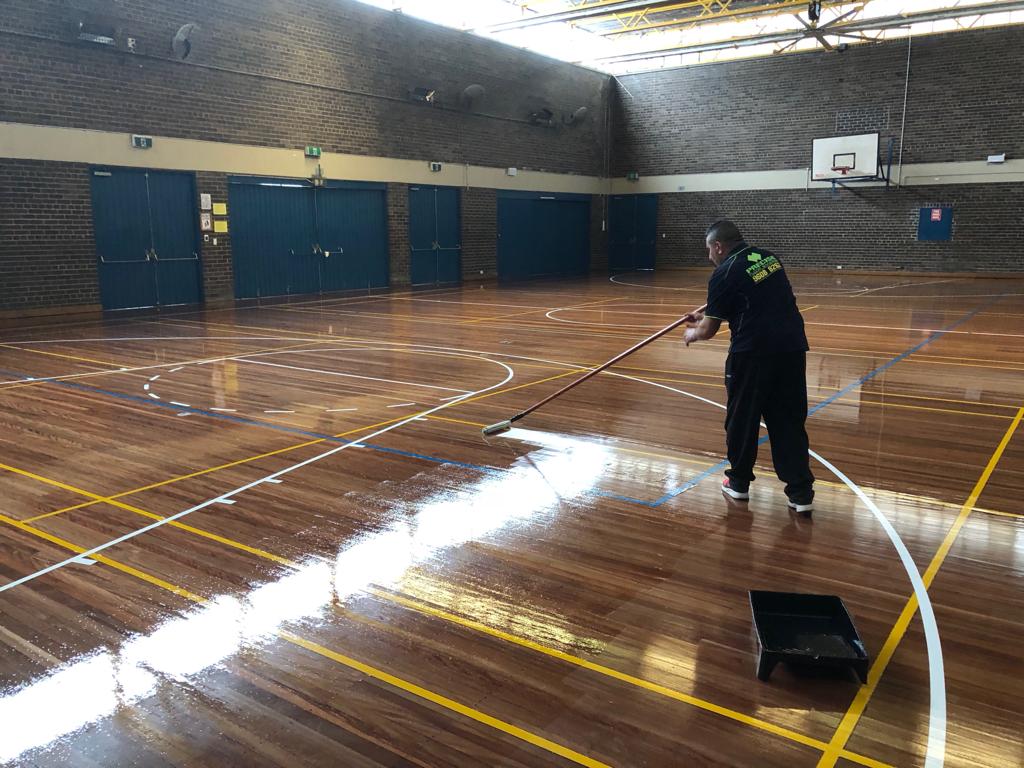
Fine sanding and edging for a smooth finish
Fine sanding and edging are crucial steps in the timber floor sanding process that help achieve a smooth and flawless finish.
By paying close attention to the fine sanding and edging stages, we can achieve a smooth and refined finish that enhances the natural beauty of your timber floors. Our skilled professionals have the knowledge and expertise to perform these tasks with precision, ensuring that every inch of your floor receives the attention it deserves.
At Precise Flooring, we pay meticulous attention to detail during this stage to ensure the highest quality results.
Here’s an overview of the fine sanding and edging process:
Fine Sanding: After the initial rough sanding to remove the old finish and imperfections, we proceed with fine sanding. Fine sanding involves using progressively finer sandpaper grits to refine the surface and create a smooth texture. This step helps to eliminate any remaining scratches, blemishes, or unevenness left from the rough sanding.
Edging: In addition to sanding the main floor area, we also pay special attention to the edges and corners of the room. This is done using specialized edging sanders that are designed to reach tight spaces. Edging ensures that the entire floor, including the hard-to-reach areas, is uniformly sanded and prepared for the next steps.
Abrasive Selection: The selection of the right abrasives is crucial during fine sanding and edging. We use high-quality sandpaper with progressively finer grits to achieve a smooth finish without causing any damage to the wood surface. Our experienced technicians have the expertise to determine the appropriate grit sequence based on the condition of your floor, ensuring optimal results.
Continuous Inspection: Throughout the fine sanding and edging process, our team continuously inspects the floor to ensure a consistent and smooth finish. Any areas that require further attention, such as stubborn stains or imperfections, are carefully addressed to achieve a flawless surface.
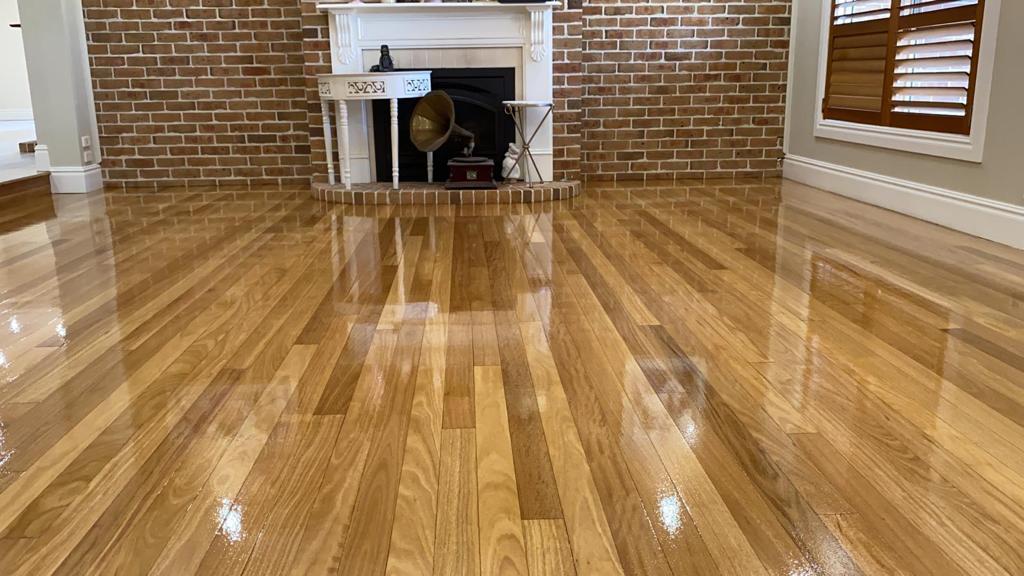
Optional staining for colour customization
We understand that every homeowner has unique design preferences, and we offer optional staining services to provide colour customization for your timber floors. Staining is an excellent way to enhance the natural beauty of your timber and create a customized look that matches your interior style.
With our staining services, you have the flexibility to choose from a wide range of colours and shades to suit your taste and existing décor. Whether you prefer a rich, dark tone or a light, natural hue, we can help you achieve the desired look for your timber floors.
Our experienced team will work closely with you to determine the right stain colour that complements your space. We can provide stain samples and expert advice to guide you in selecting the perfect shade. We consider factors such as the type of timber, lighting conditions, and your overall design vision to ensure a harmonious and cohesive look.
By opting for staining, you can customize the colour of your timber floors to match your furniture, cabinetry, or any other design elements in your home. This allows for the seamless integration of colours and creates a cohesive aesthetic throughout your living space.
Furthermore, staining not only enhances the visual appeal of your timber floors but also provides protection against daily wear and tear. It helps to preserve the timber’s natural beauty, adds depth and richness to the grain, and increases the longevity of your floors.
At Precise Flooring, we use high-quality staining products that are eco-friendly and safe for your home environment. Our team is skilled in applying the stain evenly and efficiently, ensuring a flawless and professional finish.
Clean-up and inspection after sanding
After completing the sanding process, our team at Precise Flooring understands the importance of thorough clean-up and inspection. We take great care to ensure that your space is left tidy and free from any residual dust or debris.
Our professional sanding equipment is equipped with advanced dust containment systems that minimize the spread of dust during the sanding process. However, a small amount of dust may still be present after the sanding is complete.
To ensure a clean and polished finish, our team meticulously cleans the area, including vacuuming and sweeping to remove any remaining dust particles. We pay attention to corners, edges, and hard-to-reach areas to ensure a thorough cleaning.
Once the cleaning is complete, we conduct a detailed inspection of the newly sanded floors. This allows us to identify any areas that may require additional touch-ups or repairs. Our skilled technicians carefully examine the floors for any imperfections, ensuring a smooth and flawless result.
If any repairs or touch-ups are needed, we address them promptly, making sure that the floors are in optimal condition before proceeding to the next steps, such as staining or finishing.
Our commitment to clean-up and inspection is a testament to our dedication to providing a superior service experience. We understand that attention to detail is crucial in achieving exceptional results and ensuring your satisfaction with our timber floor sanding services.
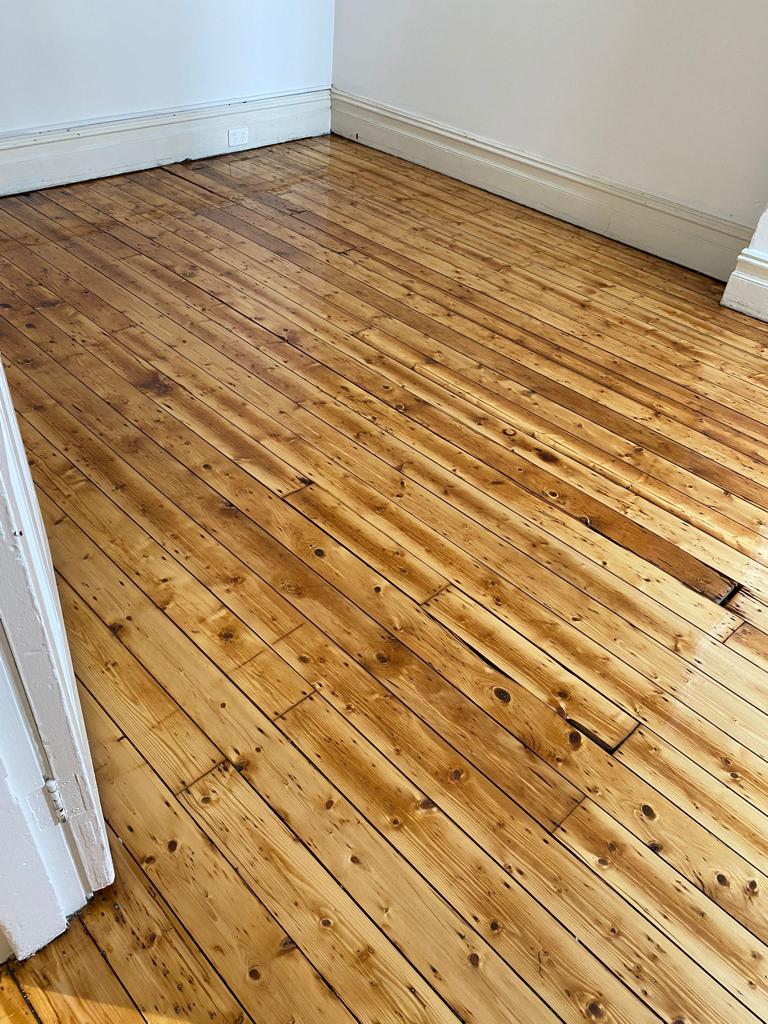
Frequently Asked Questions
Timber floor sanding is the process of removing the top layer of a wooden floor using specialized sanding equipment. It helps to restore the appearance of the floor by removing scratches, stains, and imperfections.
Timber floor sanding is essential for maintaining and enhancing the beauty of wooden floors. It can rejuvenate the appearance of your floors, remove surface imperfections, and extend their lifespan.
The frequency of timber floor sanding depends on various factors such as the amount of foot traffic, wear and tear, and the condition of the floors. Generally, it is recommended to sand your floors every 8-10 years, but this may vary based on individual circumstances.
The duration of the timber floor sanding process depends on the size of the area, the condition of the floors, and the extent of the work required. It can typically take anywhere from a few days to a week to complete the sanding process.
Traditional sanding methods can produce a significant amount of dust. However, at Precise Flooring, we utilize modern sanding equipment with advanced dust containment systems to minimize dust and keep your space clean.
It is generally recommended to vacate the premises during the sanding process to ensure safety and to allow the professionals to work efficiently. The dust and noise generated during the process may cause inconvenience.
After the sanding process, the floors are thoroughly cleaned to remove any residual dust or debris. Depending on your preferences, the floors can then be stained, finished, or polished to achieve the desired look.
The drying time can vary depending on factors such as humidity, temperature, and the type of finish applied. It is important to allow sufficient drying time before walking on the floors or placing furniture.
Timber floor sanding can significantly reduce the appearance of shallow scratches and stains. However, deep scratches or stains that have penetrated the wood may require additional repair work or replacement of the affected boards.
Hiring professionals for timber floor sanding is highly recommended. They have the expertise, experience, and specialized equipment to ensure a high-quality result and minimize the risk of damage to your floors.
AREA WE SERVICE
- Manly
- Fairlight
- Neutral Bay
- Cremorne
- Whale Beach
- Darling Point
- Woollahra
- Dover Heights
- Bronte
- North Sydney
- McMahons Point
- Palm Beach
- Annandale
- Middle Cove
- Dee Why
- Waitara
- Wahroonga
- Turramurra
- Pymble
- Vaucluse
- Rose Bay
- Newport
- Double Bay
- Balmain
- Darlinghurst
- Ryde
- Hornsby Heights
- Mount Colah
- Berowra
- Glebe
- Castle Cove
- Northbridge
- Willoughby
- Roseville
- Chatswood
- Coogee
- Bondi
- North Shore

